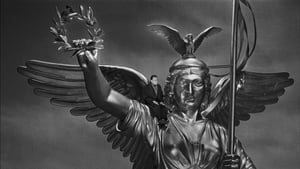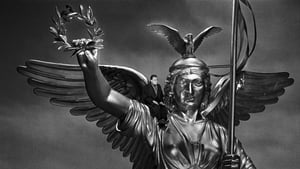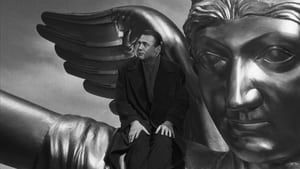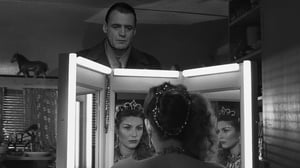Contact: [email protected]
Video Sources 0 Views

Synopsis
[ez-toc]




Introduction
In the ever-evolving world of cinema, where innovation meets tradition, there exists a timeless masterpiece that has recently undergone a controversial transformation – “Wings of Desire Colorized 1987.” Released in 1987 and directed by the visionary Wim Wenders, “Wings of Desire Colorized” is a film that has left an indelible mark on the landscape of cinema, and its recent colorization has sparked a dialogue within the film community.
Read Media File Transfer Agreement: Terms and Conditions
Read FAQ
The Art of Colorization in Film
Colorization, a process that involves adding color to black-and-white films, has been a subject of debate since its inception. The traditional purists argue for the preservation of original black-and-white aesthetics, while others see colorization as a means to breathe new life into classic films. In the case of “Wings of Desire Colorized,” the decision to colorize raises questions about the delicate balance between preservation and adaptation. The vivid hues now infusing this cinematic gem invite audiences to explore a new dimension of visual storytelling.
Pros and Cons of Restoring Old Movies with Color
The practice of restoring old films with color has its merits and demerits. On one hand, colorization can make the narrative more accessible to modern audiences and provide a fresh perspective on the visuals. On the other hand, it risks altering the director’s original artistic intent and diluting the nostalgic charm of black-and-white cinematography. The dichotomy between the benefits and drawbacks of colorization is exemplified in “Wings of Desire Colorized 1987,” urging viewers to weigh the costs and rewards of film restoration.
Director’s Vision: Wim Wenders and His Cinematic Masterpiece
At the heart of “Wings of Desire Colorized” lies the artistic vision of Wim Wenders, a director renowned for his distinctive style and thought-provoking narratives. Wenders’ approach to filmmaking often involves exploring the human experience through poetic and existential lenses. His visionary storytelling and use of unconventional techniques set the stage for a captivating exploration of love, mortality, and the human condition in “Wings of Desire Colorized 1987.”
From Angels to Mortals: The Storytelling Power of “Wings of Desire Colorized”
The narrative of “Wings of Desire” transcends conventional boundaries, weaving a tapestry that intertwines the celestial realm with the human experience. The film follows two angels, Damiel and Cassiel, who observe and interact with the lives of Berlin’s citizens. As Damiel contemplates shedding his celestial wings to become mortal and experience earthly existence, the film delves into profound themes of identity, love, and the transient nature of life.
The Visual Poetry of Light and Shadow: Cinematography in “Wings of Desire”
Henri Alekan’s cinematography in the original black-and-white version of “Wings of Desire” is nothing short of poetic. The interplay of light and shadow captures the ethereal quality of the angelic realm, infusing each frame with a timeless elegance. The monochromatic palette contributes to the film’s dreamlike atmosphere, emphasizing the contrast between the heavenly and earthly realms. The decision to colorize the film introduces a new dimension, raising questions about how the visual poetry of light and shadow translates into a spectrum of colors.
Color as a Narrative Tool: The Significance of the Colorized Elements in “Wings of Desire”
In the colorized version of “Wings of Desire,” every hue serves as a narrative tool, guiding the audience through the emotional landscape of the film. The addition of color accentuates key moments, providing a nuanced layer to the storytelling. Red, for instance, may symbolize passion or the vibrancy of life, while blue could represent the celestial and otherworldly aspects of the narrative. The use of color becomes a visual language, enhancing the emotional impact of the film.
The Legacy of “Wings of Desire” in Both Black-and-White and Color
Released initially in black and white, “Wings of Desire” garnered critical acclaim for its innovative storytelling and visual aesthetics. The film has since earned its place as a German cinema masterpiece. The decision to colorize a film with such a prestigious legacy is a bold move, sparking discussions about the impact on the film’s reception and long-term influence. “Wings of Desire Colorized 1987” stands at the crossroads of tradition and innovation, prompting audiences to reevaluate their perceptions of cinematic classics.
Preserving Cinematic Gems: The Importance of Film Restoration and Archival
The discussion around “Wings of Desire Colorized 1987” extends beyond personal preferences to the broader theme of film preservation. As technology advances, the importance of restoring and archiving old movies becomes increasingly evident. The delicate process of restoration ensures that cinematic gems like “Wings of Desire” continue to enchant and inspire new generations. The juxtaposition of the black-and-white original and the colorized version emphasizes the ongoing need to strike a balance between preserving the past and embracing the possibilities of the future.
In Conclusion
“Wings of Desire Colorized 1987” invites viewers to engage in a cinematic experience that goes beyond the conventional boundaries of black and white. Wim Wenders’ timeless masterpiece has taken on a new identity, embracing color as a storytelling element. As we navigate the dichotomy between the nostalgic charm of original aesthetics and the allure of modern adaptation, it becomes clear that both versions of “Wings of Desire” offer unique and valid experiences for audiences.
In the ever-evolving landscape of film, the debate on colorization will persist, challenging us to appreciate the artistry in both traditional and modern approaches. “Wings of Desire Colorized 1987” serves as a catalyst for this discussion, urging cinephiles to explore the vast spectrum of cinematic possibilities while preserving the essence of timeless classics. As we navigate the intersection of old and new, let us cherish the rich tapestry of cinema, where every frame tells a story, whether in the monochrome elegance of the past or the vibrant hues of the future.


















